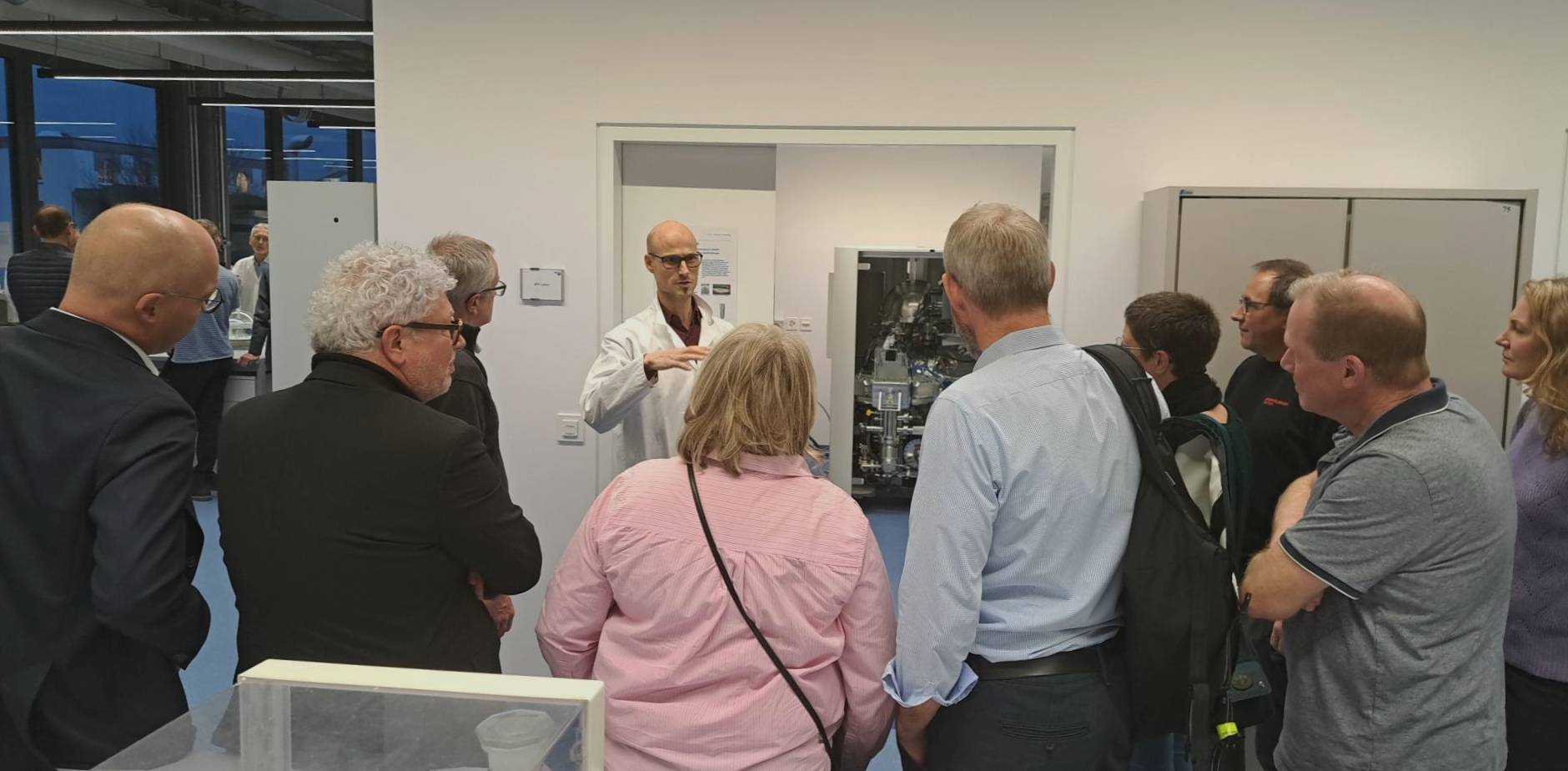IL-17: Particle Size Analysis by Laser Diffraction
Particles play an important role in many applications. Therefore, in-formation about their size, number and shape are of major concern. For example, wear particles of artificial joints are considered the main cause of bone resorption and prosthesis loosening. Similarly, strong ceramics rely on a good control of the particle size distribution of the raw material. Laser diffraction has become the leading technique in particle analysis during the last years. Benefits are short analysis times, good reproducibility and ease of calibration.
Principle: The static light scattering (laser diffraction) is a simple and fast measurement principle. The sample (powder, particles, etc.) passes a laser beam in an air stream (dry) or in solution / suspension. A sensor positioned in the beam path behind the measuring cell detects the diffracted light. The scattering angle increases with decreasing particle size and the intensity of scattering increases with the particle volume of the particle.

Figure 1: Principle of laser diffraction.
The particle size distribution is determined using the models of Fraunhofer and Mie. The Fraunhofer theory is applicable only for large particles as it is based on opaque particles, which scatter light at narrow angles. For particles smaller than 50 microns, the Mie theory should be used. For this it is necessary to know the refractive index of the particles.
Application: Particle sizes of powders, suspensions and emulsions in the range from 17 nm to 2 mm can be determined at the RMS Foundation. The amount of sample needed depends on the average particle size and the width of the size distribution. The larger the particle size and the wider the distribution, the more material is needed. As a result, sampling is crucial; the sample must be representative to the whole product. Breaking up the agglomerates and complete dispersion of the sample are achieved through the integrated ultrasonic equipment and the adaptation of the measurement conditions.

Figure 2: Particle size distribution of polyethylene wear particles.
Examples: The applications in medical technology are manifold. Besides the classical determination of the particle size of powders and granules for bone substitute materials, also particles from wear tests can be characterized.

Figure 3: SEM image of polyethylene wear particles.
As spherical particles are assumed in the light scattering models, the effective particle shape must be determined by imaging (i. e. optical or scanning electron microscopy) in order to complement the analysis.
Questions
• Particle size distribution of inorganic and organic powders
• Particle size distribution of debris from wear tests
Equipment
Beckman Coulter LS 13320 with PIDS
Tornado Dry Powder System for granules and powders
Measurement range: 0.4 – 2000 µm
Sample mass: 250 mg – 50 g
Universal Liquid Module und Micro Liquid Module for suspensions and emulsions
Measurement range: 0.017 – 2000 µm
Ultrasonication: 75 Watt
Dispersion media: Water, solvent, weak acids and bases

